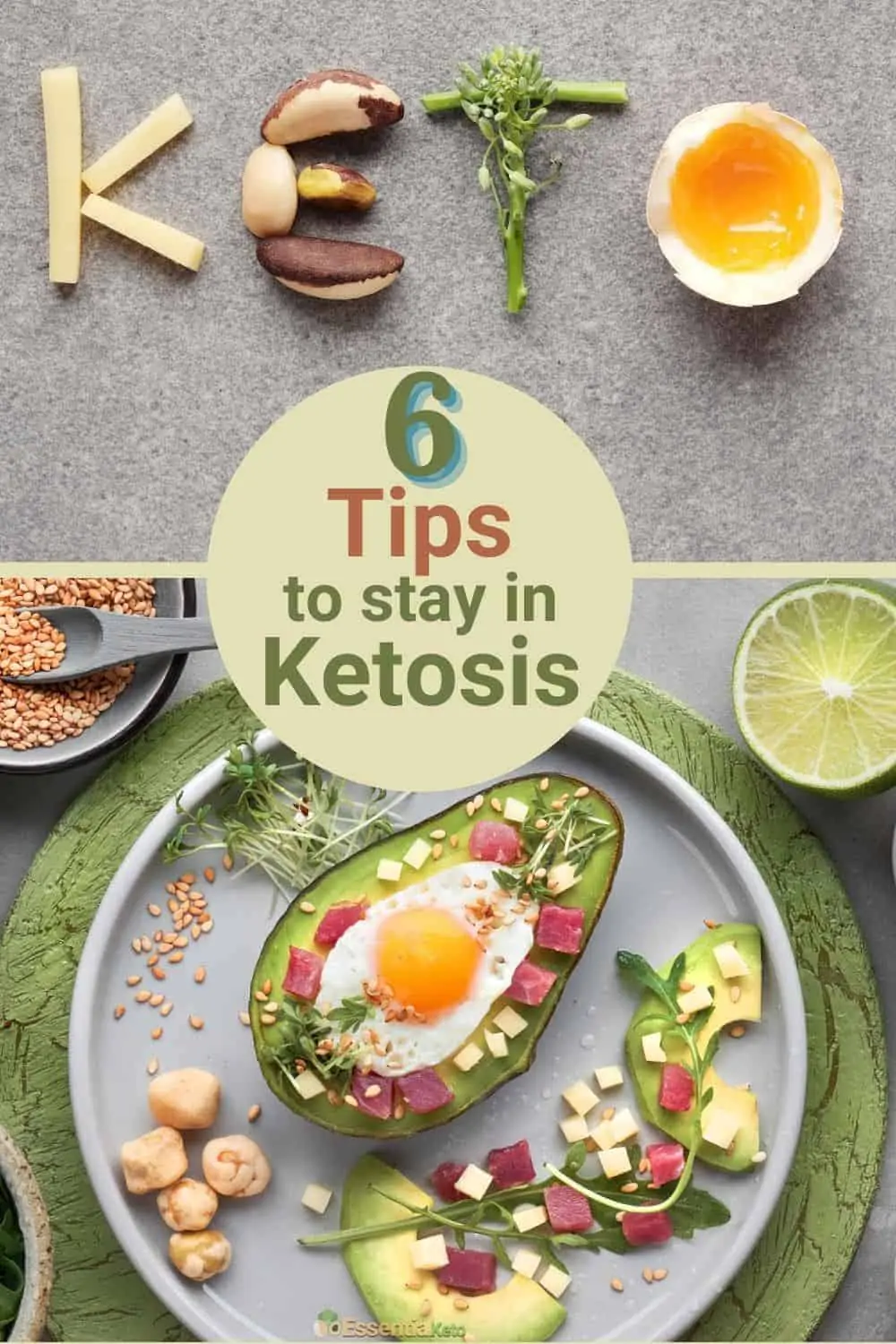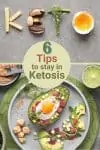Make Staying in Ketosis Easier with these Tips
Many people struggle to lose weight. They often try to lose weight with low-calorie and low fat diets.
Any plan where you severely limit food will yield some results. But the weight loss may be achieved haphazardly and because of hunger pangs the weight loss may also be tough to maintain.
The ketogenic diet, meanwhile, is a diet plan that concentrates on ultra-low carb meals.
It aims to lose fat by changing your body's fuel from sugar to fat whilst you feel satisfied and no longer suffer from hunger.

For this diet to be effective, you need to reach a state of ketosis. To do this you must get rid of nearly all the present carbohydrates in the body.
As soon as the carb reserves are depleted, the body turns to use fat reserves as fuel.
Achieving ketosis, can be challenging. The initial days into the keto diet, or any diet that is aimed to encourage ketosis, will eventually lead to muscle fatigue and sluggishness.
This state also known as keto flu is not pleasant but will most likely only last for a few days.
Not sure how to get into ketosis, then check out our 4 step plan to get your body into ketosis.
Once you reach a state of ketosis your body finds homeostasis or balance and the fatigue and weariness fade out.
The challenge here is then to remain in ketosis. If you happen to consume too much carbohydrates, your body leaves the ketogenic state.
Hence it is advised that you start the first stage of the ketosis diet once more to attain ketosis again.
Basic Tips to Stay in Ketosis
Get rid of starches
To reach a ketogenic state, you should cut down on your carbohydrate intake. Limit your consumption of carbs to below 20 grams per day and at an absolute maximum of 50 grams per day.
Based on the recommendations by the Food and Drug Administration most people consume an average of at least 300 grams of carbohydrates per day.
So,
In reality for most of us we have to reduce our carbs by 90% That is a lot!
To put this in perspective 1 cup of rice has 44.2 grams of carbs and 40.7 grams of net carbs. And the macros for brown rice is exactly the same.
The carbs in all rice products are high. To see exactly how high and to find the best alternatives for rice, check out our article:
And corn is no better.
1 cup of corn has 32 grams of carbs and 30 grams of net carbs.
The carbs in all corn products are high. We discuss the carb counts of many corn products like corn of the cobb, cornflakes, nachos and so on here.
So, to assist your body in shifting to a fat-burning approach and staying there, get rid of all bread, grains like cereals, rice, granola, pasta, sugary desserts, jams, syrups and sweet drinks, baked products, vegetables with plenty of starch like potatoes, corn, fruits, and certain dairy products like milk and yogurt.
Here is a list of all the rich carb foods to avoid.
Stick to "friendly" carbs, but do count them
To stay below 20 grams of carbs each day stick to green leafy vegetables like kale, spinach and lettuce, cruciferous vegetables like cauliflower, broccoli, cabbage, and Brussels sprouts.
Eat salad vegetables, like cucumber and green peppers.
Most vegetables with zero starch have less than 5 grams of carbohydrates per cup. However, the carb content will differ among these vegetables.
Observe your carb intake to remain within your daily macros. For an easy reference stick to the green vegetables on this banting list.
Regulate your protein
Apart from vegetables with no starch, every meal must also contain a controlled serving of protein and great quantities of good fat.
You'll want to calculate your macros and manage your protein servings. You want to eat enough, but it is easy to eat too much protein, and this will kick you out of ketosis.
Eat enough fat
Don't skimp on the fat.
After years of being told that fat is bad for us, most of us fear fat.
But remember, we are trying to change our fuel from sugar or carbs to fat. So, we need enough fat.
When you don't eat enough fat, you will get hungry and that will cause cravings.
Our shopping list will give you lots of ideas of the best fats to include in your diet.
I know everybody does not agree, but if you don't manage to eat enough fat, do add the occasional fat bomb. I love this creamy fat bomb.
Adding butter or coconut or MCT oil to your coffee or other foods is one of the easiest ways to add fat to your diet.
Be careful of nuts and dairy
Enjoy some nuts, but remember even though they are an excellent source of fat, depending on the type of nut, they may also have too much carbs.
To see which nuts are best, check out this Best and Worst List by The Diet Doctor.
Also, check out our list of keto-friendly nuts and seeds.
Be careful of dairy. Milk really is a no no and so is yogurt. Cheese has carbs, but it varies between the different types of cheeses.
Here you can see how much carbs there are in an ounce of the different types of cheese.
Be careful when you eat out
Your life can't stop because you changed your lifestyle. But it is easier to manage your carb consumption when you prepare your own food.
If you have to eat out though, choose carefully.
Our tips and guide can help you to choose the best restaurant for healthy low carb meals. And to make the best meal choices.

Conclusion
Set yourself up for success!
If you need help with a custom meal plan, go here.
Create a plan and remember a good ketogenic meal plan should include 1-2 cups of non-starchy vegetables, 4-6 ounces of protein, and 1-2 tablespoons of fat per meal.
Cut out all starchy carbs, eat enough but not too much protein and don't fear fat.
And if you eat out, be careful! Join our mailing list for our eating out guide.

